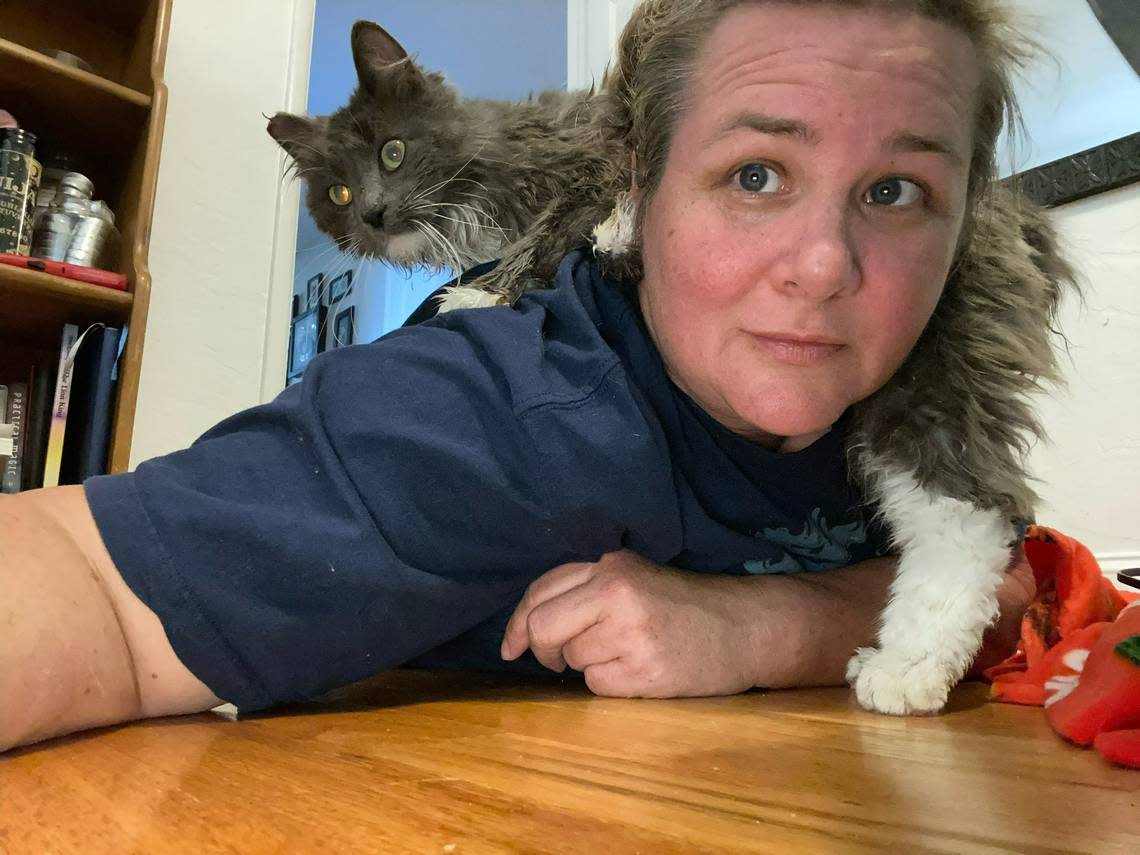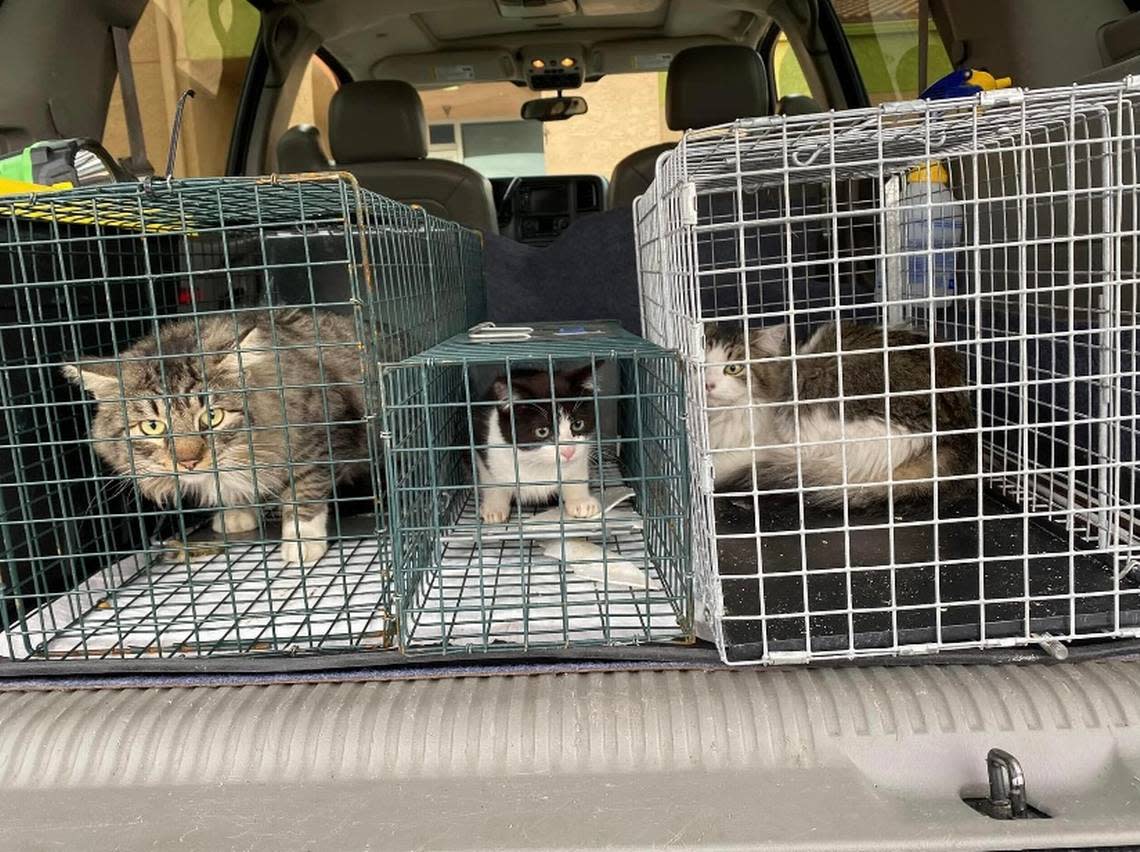Lacking trap-neuter-return services, Fresno’s feral cat problem is about to get worse | Opinion
Fresno has a feral and stray cat problem. And the problem has never been more dire.
Yes, California’s fifth-largest city has larger and more pressing issues than unowned cats living outdoors and multiplying. I need not list any, since everyone reading this can rattle off four or five without blinking or thinking.
To control community cat populations, many animal organizations and feline lovers believe in Trap-Neuter-Return as the most humane and effective method. Instead of being euthanized, they’re caught, sterilized by a veterinarian and returned to their familiar surroundings.
Fresno Humane Animal Services also has a TNR policy. But as of March 1, the contracted animal services provider for both the city of Fresno and Fresno County is no longer offering this service for feral and stray cats. Neither are other local organizations including HOPE Animal Foundation, Valley Animal Center and Central California SPCA.
Why not?
Opinion
“We simply don’t have the resources at this time,” said Angyla Brumm, the animal services supervisor for FHAS. “It’s a vet shortage, not a lack of support for TNR.”
According to Brumm, FHAS has spent the last nine or 10 months unsuccessfully trying to hire veterinarians for the city’s newly built $20 million animal shelter near Fresno Yosemite International Airport as well as the county’s new facility between Highway 180 and Belmont Memorial Park.
In recent months, FHAS contracted with Valley Animal Center to provide spay and neuter services for dogs and cats. However, the backlog is so high — one VAC employee told me it started at 1,000 animals — there’s no capacity for ferals.
HOPE Animal Foundation used to provide five appointments per day on a first-come, first-serve basis. However, a sign currently posted on the clinic’s front door says they “will no longer be offering feral cat sterilization” and advises interested parties to “contact your local animal control or other animal hospitals.”
That wouldn’t be Central California SPCA, either. Spokesperson Walter Salvari said by law his organization cannot take in strays now that it is no longer (as of July 2022) the city’s designated animal control agency. Furthermore, the CCSPCA “does not advocate for TNR or allowing community cats to run rampant in the Central Valley.”
Nonprofits, private residents drive Trap-Neuter-Return
The only current sterilization option for feral and stray cats is private veterinarians that charge a couple hundred bucks or more if it’s a pregnant female. (FHAS charged $25 and HOPE $65 when they offered the service.) Furthermore, private vets typically require a health exam prior to the procedure as well as an appointment, both of which are nearly impossible with a nearly-impossible-to-handle trapped cat.
“People want to do the right thing, but when it’s going to cost them $150 or $200 a pop they’re not going to,” said Pam Kelly, founder of the nonprofit Feral Felines of Fresno.
One thing I’ve learned while reporting on this topic is the number of residents who care about community cats and want to help control their numbers by means other than euthanization.
One of them is Brandi Sherman of Fresno T.N.R., a two-person outfit responsible for spaying and neutering some 2,850 cats in 2022 alone. The group is funded by Dogwood Animal Rescue, a nonprofit based in Santa Rosa.

Sherman, a former vet tech who now works nights in a human hospital, said Fresno’s community cat problem stems from both irresponsible humans (i.e. people who feed cat colonies or leave their pets behind when they move) and misinformation (i.e. people who mistakenly believe female cats must have a litter before they can be safely fixed).
“Fresno is focused on dogs, but on cats not so much,” Sherman said. “I don’t like going out and catching a bunch of cats only for them to get euthanized because they were sick and we can’t save them. That’s not fun.”
Private citizens also take matters into their own hands. One Fresno resident told me that between her and a neighbor, they have paid for the sterilization of 42 feral cats in their neighborhood since 2021 — at $65 apiece.
Another, Ann Adams, said she noticed the severe overpopulation of homeless and unfixed cats shortly after moving from the Bay Area two years ago. She and a neighbor have since paid to fix 20-25 cats, but don’t know where to turn now that animal hospitals are no longer accepting them.
‘By May we could have thousands of kittens born’
“This closure of all four of the previous feral/community cat vet locations for spay and neutering is going to drastically set Fresno back on the slow progress we were making as civilians,” Adams said via email.
“This time of year is when cats reproduce; by May we could have thousands of kittens born on the street if we can’t fix any cats for the next two to three months. The timing could not be worse.”
Ironically, Fresno last month launched a low- and no-cost spay and neuter program for domesticated dogs and cats. To date, the city has received more than 3,000 calls from the public.
While acknowledging the lack of services for feral cats, Fresno City Manager Georgeanne White said the city has “dramatically” increased public outreach by assigning two full-time employees to the duties of increasing fostering and adoptions.

Sherman questioned that strategy.
“Fresno is trying to rescue their way out of this, but that’s not going to work,” she said. “TNR is the only way to make a dent in the problem.”
There is no disagreement about the shortage of veterinarians, not just in Fresno but nationwide. The profession has been plagued not just by high turnover but high rates of suicide compared to the general population, according to a 2018 CDC study.
In the city’s 2023 budget, $9,895,000 was set aside to cover all operational and equipment costs for both the new animal center and legally mandated services such as dog licensing, vaccinations and catching.
However, it’s not a lack of money that has contributed to the feral cat problem, according to Brumm of FHAS, who hopes to reopen public TNR service “in a couple months.” It’s the lack of staff and other resources.
“We’ll try to help anyone who contacts us about feral cats,” she said, “but it’s not going to be right away.”
The problem is about to get worse.
